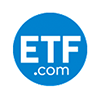etf

For about three decades, the working asset pricing model was the capital asset pricing model (CAPM), with beta—specifically market beta—being its sole factor. Then, in 1993, the Fama-French three-factor model—which added size and value—replaced the CAPM as the workhorse model. By eliminating two major anomalies (the outperformance of small stocks and of value stocks), it…

One of the interesting puzzles in finance is that stocks with greater idiosyncratic volatility (IVOL) have produced lower returns. This is an anomaly, because idiosyncratic volatility is viewed as a risk factor—greater volatility should be rewarded with higher, not lower, returns. Robert Stambaugh, Jianfeng Yu and Yu Yuan, authors of the study “Arbitrage Asymmetry and…

Haim Mozes and John Launny Steffens, authors of the study “Getting More Value Out of the Value Factor,” which was published in The Journal of Investing’s Winter 2015 issue, have attempted to create a model that can accurately predict the performance of the value premium. The factors in their model include analysts’ long-term earnings growth…

One of the questions I’m most often asked by reporters covering finance is: “What are the biggest risks facing investors?” My usual response is that the biggest risk confronting most investors is staring right back at them when they look in the mirror. And there’s plenty of academic research to support that view. Much of…

Over the past decade, investors have continued to pour new assets into hedge funds. Total hedge fund assets under management are now greater than $2.6 trillion, and the number of hedge funds continues to grow (current estimates put them in excess of 10,000, more than twice the number there were in 1990). Consider also that…

Classical economic theory suggests that free markets, in which individuals each act according to their self-interest, yield the best of all possible worlds. All one has to do is look around at places like Cuba and North Korea to see the benefits this system has provided. But economists George Akerlof and Nobel Prize-winner Robert Shiller…

It’s logical to believe that corporate managers have a preference for issuing equity at times they perceive their firm’s stock price is overvalued or high relative to some benchmark (such as price-to-earnings ratio or book-to-market ratio). The academic research on the subject supports this hypothesis—seasoned equity offerings (SEOs) do tend to be preceded by unusually…

Earlier this week, we discussed a March 2016 study by Rodney Boehme, Veljko Fotak and Anthony May, “Crash Risk and Seasoned Equity Offerings,” which provided evidence that companies will tend to withhold (and accumulate) bad news for an extended period of time, keeping stock prices temporarily higher (think WorldCom and Enron). Bad news, however, cannot…

The financial crisis of 2008, when all risky asset classes suffered dramatic losses, led many investors to seek out “alternative” investments that claimed to provide downside protection, or positive returns independent of the market environment. This resulted in the introduction of a new segment of mutual funds that operate at the intersection of traditional mutual…

The Shiller cyclically adjusted (for inflation) price-to-earnings ratio—referred to as the CAPE 10 because it averages the last 10 years’ earnings and adjusts them for inflation—is a metric used by many to determine whether the market is undervalued, fairly valued or overvalued. Employing a 10-year average for earnings, instead of the most current 12-month earnings,…

The prevailing wisdom is that the market for equities in emerging markets is less efficient than in developed markets. Unfortunately, the evidence doesn’t support this hypothesis. For instance, the S&P Indices Versus Active (SPIVA) scorecard showed that over the 10-year period ending June 2015, 92% of actively managed emerging market funds underperformed their benchmark, the…

Capital committed to private equity (PE) funds worldwide has risen substantially in the last two decades, thanks largely to U.S. pension funds searching for alternatives to public equity markets that might help them meet their return objectives. Endowments seeking to replicate the successes of the Yale Endowment have also contributed to the growth of PE…

Most investors believe all passively managed funds within the same asset class should have the same, or at least very similar, returns. However, while all index funds and passive structured asset class funds are similar in the way that rectangles and squares are similar, they are also very different. All squares are rectangles, but not…

Hedge funds entered 2016 coming off their seventh-straight year of trailing U.S. stocks (as measured by the S&P 500 Index) by significant margins. And for the 10-year period ending 2015—one that included the worst bear market in the post-Depression era—the HFRX Global Hedge Fund Index managed to return just 0.7% per year, underperforming every single…

As the annual S&P Active Versus Passive (SPIVA) scorecard demonstrated, 2015 was another painful year for U.S. actively managed funds. It found that 66.1% of large-cap managers, 56.8% of midcap managers, 72.2% of small-cap managers and 61.9% of real estate investment trust managers underperformed the S&P 500, the S&P MidCap 400, the S&P SmallCap 600…



